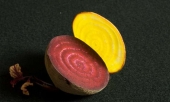
 1
1




Brenda
Bloom where you are planted.
http://restfultrailsfoodforestgarden.blogspot.com/




"Limitation is the mother of good management", Michael Evanari
Location: Southwestern Oregon (Jackson County), Zone 7




That's my opinion and I'm sticking to it, unless someone yells at me or something.














Brenda
Bloom where you are planted.
http://restfultrailsfoodforestgarden.blogspot.com/










"Instead of Pay It Forward I prefer Plant It Forward" ~Howard Story / "God has cared for these trees, saved them from drought, disease, avalanches, and a thousand tempests and floods. But he cannot save them from fools." ~John Muir
My Project Page




 When she visits them next time I'll just keep her supplied with ingredients as the freezer fills up.
When she visits them next time I'll just keep her supplied with ingredients as the freezer fills up.



Brenda
Bloom where you are planted.
http://restfultrailsfoodforestgarden.blogspot.com/






|
Have you no shame? Have you no decency? Have you no tiny ad?
Homestead Pigs Course
https://permies.com/wiki/365748/Homestead-Pigs
|

